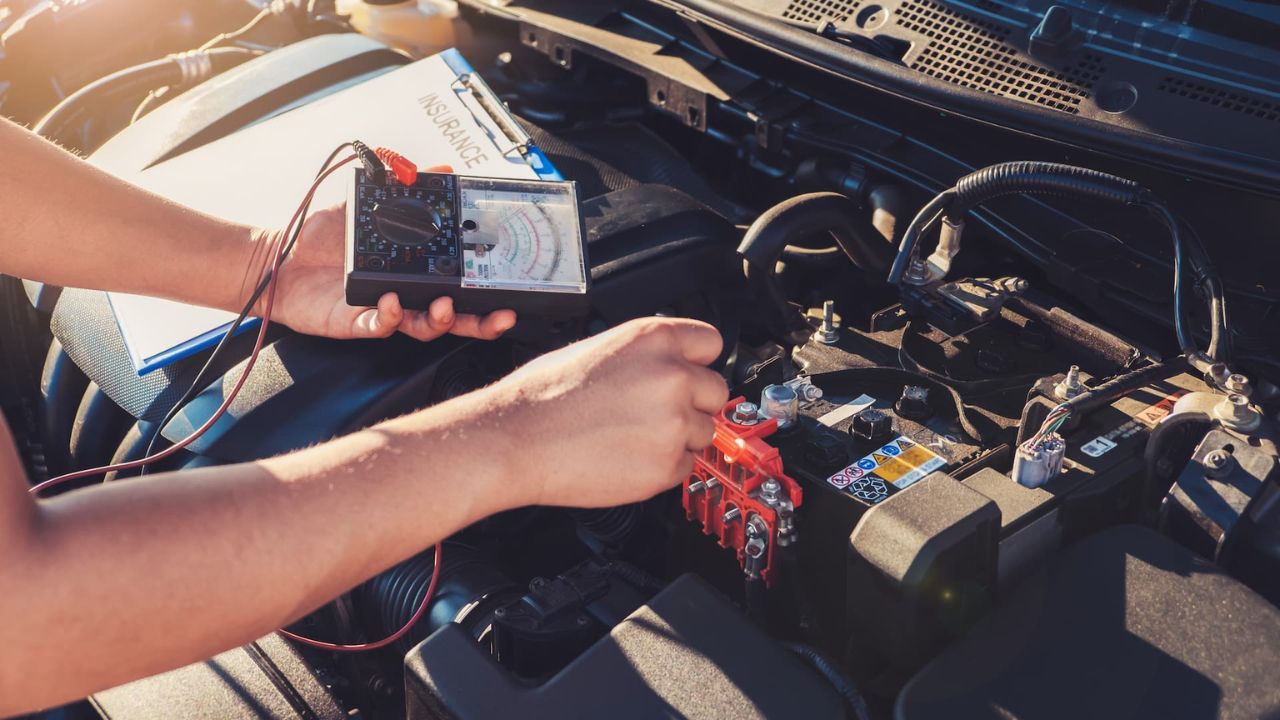There is a very straightforward reason why the conversion between Cold Cranking Amps (CCA) and Amp Hours (Ah) is not exact: Amp Hours (Ah) refers to the capacity of the battery and its ability to produce a specific current for, typically, 20 hours, whereas Cold
Cranking Amps refer to the ability of the battery to provide significant currents required for starting/cranking of internal combustion engines, typically for 30 seconds. So, how do you convert cold-cranking Amps (CCA) to Amps hours (Ah)?
There are many requirements for car batteries that you should be aware of. You must purchase the proper battery for your vehicle because modern cars require a lot of technological components.
The CCA to Ah conversion is useful for figuring out whether a battery will suit a particular car or not.
What are Cold Cranking Amps (CCA)?
The term “cold-cranking amps” refers to a rating system that describes a battery’s capacity to start or crank an engine in cold weather.
In other words, Cold Cranking Amps (CCA) is a measurement of the amount of current a battery can deliver at a temperature of 0°F (-18°C) for 30 seconds while still maintaining a voltage of at least 7.2 volts.
In essence, it evaluates a battery’s capability to start an engine in a cold environment.
Whether on land or in the water, starting your engine is one of the biggest issues when it comes to cars, and not all batteries perform at their best in more severe weather.
Some people, especially those who live in persistently cold regions, require more energy to start a car or boat battery than those who reside in warmer climates.
More than anything else, a CCA rating will let you know how many amps are required to ensure that cold weather won’t make it difficult for you to start your engine.
The CCA rating provides information on the number of amps produced by a charged battery during a 30-second period while sustaining at least 7.2 volts at a temperature of 0°F (-18°C) to help consumers choose the best battery.

What are amp hours (Ah)?
Ampere-hour (Ah) is a standard unit of electrical charge for assessing a battery’s capacity. When a current of one ampere (1 A) is flowing, it is defined as the volume of electrical charge that moves across a circuit in a 24-hour period.
A battery with a 10 Ah capacity, for instance, has the ability to deliver a current of 1 A for 10 hours or a current of 5 A for 2 hours.
When comparing the capacity of batteries of various types and sizes, ampere-hours are a useful unit of measurement.
It’s vital to remember that a battery’s real runtime will also depend on other elements, such as the effectiveness of the device it is powering, the temperature, and other operational circumstances.
Why do you need to convert Cold Cranking Amps (CCA) to Amp Hours (Ah)?
There are two distinct ways to measure a battery’s capacity: Cold Cranking Amps (CCA) and Amp Hours (Ah).? While Ah represents the amount of energy a battery can store and provide over a longer period of time, CCA assesses a battery’s capacity to start an engine in cold weather.
If you wish to compare the capacity of various batteries that are rated in various units, you might want to convert CCA to Ah. It is necessary to convert the CCA rating to Ah in order to fairly compare, for instance, a vehicle battery with a CCA rating to a deep cycle marine battery with an Ah rating.
The conversion from CCA to Ah is not exact since it makes assumptions about the battery’s discharge profile. It still allows you to get an idea of how much power a battery can hold and deliver over time.
What is the difference between cold cranking amps (CCA) and amp hours (AH)?
CCA is the ability to supply power for a brief amount of time (bursts) as was mentioned above for car starting, whereas Ah is the ability to deliver power for a prolonged period of time.
| Parameters | Cold Cranking Amps (CCA) | Amp Hours (AH) |
| Measurement | Measured in amps | Measured in ampere-hours |
| Use | Measures a battery’s ability to start an engine in cold temperatures | Measures the battery’s total energy storage capacity |
| Relationship to Battery Size | A higher CCA rating typically means a larger battery | A higher AH rating typically means a larger battery |
| Battery Type | Used for starting batteries (lead-acid batteries) | Used for deep cycle batteries (lead-acid, lithium-ion, etc.) |
| Importance | Important for starting vehicles in cold weather conditions | Important for powering electrical systems and accessories over a longer period of time |
Note: Amp Hours (AH) is a measurement used largely for deep cycle batteries used in applications like RVs, boats, and renewable energy systems. Cold Cranking Amps (CCA) is a measurement used mostly for lead-acid starting batteries used in vehicles.
How do I convert Cold Cranking Amps (CCA) to Amp Hours (Ah)?
Since there is no correlation between CCA and Ah, there is no straight conversion from one to the other.
However, as a general guideline, you can calculate Ah by dividing the CCA by 7.25. For instance, a battery designated 1450 CCA stands for 200 Ah. A battery with this rating ought to deliver 8 amps of power for 25 hours.
Even if you simply have the CCA statistics, knowing your rate of use and voltage level will help you choose the proper battery. In contrast, you may calculate the CCA measurement to see how well your battery can start your engine in cold weather if you know the Ah values on it.